Cave painting lit by the glow of a fire
Artists have been rendering images lit by artificial light for 50,000 years, initially fire and then candles were the main light sources once the sun went down, then from the 12th century onwards the occasional firework would light up the place, and from the 19th century onwards we had gaslights, electric lights and associated objects such as light bulbs, florescent tubes and eventually lasers and glow-sticks. However each light source also comes with an associated 'mythic' idea.
The cigarette lighter or match for instance is associated with the sudden illumination of a face, the lighting of a cigarette or pipe, often itself a moment that punctuates time in a special way. In wartime we have the sniper 'myth'. The belief was that when the first soldier lit his cigarette, a sniper would see the light; as the second soldier lit his from the same match, the sniper would take aim and when the third soldier lent over to get a light the sniper would fire.
The face illuminated by a cigarette being lit
The sudden illumination of a face and hand by a struck match or flicked lighter flint can in certain situations appear to be almost mystical and the romance surrounding cigarette smoking is still after many years of anti-smoking campaigns, something that the medical profession have never really been able to remove.
From the film Blade Runner
The cigarette of course also had the added mystique of smoke. Smoke being something that has for thousands of years been associated with the mystical and the spiritual, its drifting amorphousness being a sign of the solid things of this world transforming into the airy substance of unreality.
Artificial light also suggests by its very name some sort of mimicked reality. It is a replacement for the light of the sun and as such there is something otherworldly about it.
Mini-ecosystems in the Netherlands, used to test the effects of artificial light
The unreality of artificial light has also historically helped artists to portray mystic effects and religious art in Western Europe would have lost one of its most powerful signifiers if artificial light sources were eliminated from an artist's metaphoric range.
miracle of light which enlightens
the darkness mentioned in the Bible
The holy night: Correggio
The Bible introduces us to 'the miracle of light that enlightens darkness', and in the case above Correggio makes the miracle of the holy birth from a metaphorical baby lamp that illuminates those who were in spiritual darkness before the coming of Jesus. The technique of chiaroscuro was the one that most artists who were drawn to artificial lighting effects used during the late Renaissance. Chiaroscuro originated during the Renaissance as drawing on coloured paper, where the artist worked from the paper’s base tone toward light using a white gouache type pigment, and toward dark using ink, body-colour or watercolour.
Diogenes: Chiaroscuro woodcut: Ugo da Carpi c. 1527
Chiaroscuro woodcuts began as imitations of the mid-toned paper technique, and during the same period, the painting of images in monochrome or two colours, more generally known in English by the French equivalent 'grisaille', became popular again.
This time instead of being used to imitate sculpture, as in Jan van Eyck's The Annunciation above, the grisaille technique was being used to explore the more subtle emotional possibilities of tonal values, as in Pieter Bruegel's work below. Bruegel's interest in tone is however more closely related to 'unione' than chiaroscuro, unione being much more directly concerned with the emotional delicacy that could be achieved by the careful control of tonal schemes.
The term chiaroscuro eventually broadened in meaning to cover all strong contrasts in illumination between light and dark areas in art, which is now the primary meaning. The artist who established the method as a technique on which so many painters relied upon to develop religious intensity and heightened emotive spiritual ideas, was Caravaggio. I would like to think that he opened out the etymology the word and returned it to its origins. Chiaroscuro is a compound word, 'chiaro' meaning “clear” and 'oscuro' meaning 'obscure'. Usually 'chiaro' is translated as 'light' and 'oscuro' as 'dark', as in light dark contrast, but there is something mystical about artificial light that a conjunction of clarity and obscurity suggests but light/dark doesn't.
Caravaggio: St Jerome
Georges De La Tour
A blast furnace in operation
A new positive/negative set of metaphors begin to emerge, that of furnaces of the new industrial age as openings into the pits of Hell, a ruddy glow that was contrasted with the harsh light of reason. Joseph Wright's scientific idealism, is leading to a society whereby the majority of people labour in artificial light, they are no longer working in the fields and their bodies no longer attuned to nature's clock. Even when not working in factories or offices, people would return home to artificially lit domestic environments, interior life being both psychologically and physically controlled by these now almost universal lighting conditions.
The Iron Rolling Mill: Adolph Menzil: 1870
On the one hand we have the idea of artificial light as spiritual illumination and on the other it can be a demonic glow. These two poles would remain in some sort of oscillating relationship as the twentieth century unfolded. In the 1909 Futurist manifesto Marinetti writes, "three hundred electric moons wiped out with their dazzling rays of plaster the ancient green queen of love." We have a suggestion here that the old moon is being replaced by new forms of nightly illumination and that there is an exciting if more mechanical future opening up.
In my own home town of Dudley in the 1880s a rare visiting artist captured the importance of artificial street lighting to the town's populace, most of whom would have been working in nearby factories or iron foundries, these lights would have been gas lit, a few of which still survived in the 1950s when I was a boy, my grandparents house in the village of Pensnett being in those days still partly gas lit, the noise of the gas burning, sizzling and popping being something that I can still hear, the soft light being more 'cozy' and warm; or is that just memory at work?
Ernest R Fox: Dudley Market Place 1880s
Atkinson Grimshaw: Boar Lane Leeds 1881
In Leeds Atkinson Grimshaw was the artist to go to for painted scenes of artificial light, the city's Victoria Quarter as it is now known, being a focus for brightly gas lit arcades and illuminated merchandise, a light once reserved for the illumination of spiritual moments, now lighting the many goods people could now buy, the theatre spotlight once turned on the lead actor, now it seems turned on the latest goods to buy. Consumerism beginning alongside the advent of gas and electric lighting.
Karl Saltzmann: Electric Lighting in Berlin: 1884
The advent of electric lighting in cities was a dramatic change, the yellow glow of gaslight was replaced by a sharp white light. Look at how high up these new lights were placed and how stark the shadows are in Karl Saltzmann's painting. Manet's painting of the Bar at the Folies Bergère is one of the first paintings to portray electric light. It's harsh reality seeming to bring a new psychological subject type into the urban world, the woman at the bar seems to be stripped of all her inner depth, even her reflection is disassociated from her, the bright white light enables her to be interrogated by the viewer as never before, but in this interrogation we find it very hard to grasp who she is, the clearer we see her external reality, the harder it is to understand her internal motivation.
Edward Hopper: Nighthawks: 1942
Artificial light also enabled late night life, from clubs to late opening MacDonalds, and as people's lives entered these new environments, artists would follow and as they did the sensibility of city life began to include the lit night as much as the day, artificial light enabling a 24 hour lifestyle, whether this was good for us or not.
In 2014 the Ferens Art Gallery in Hull hosted, '3AM: Wonder, Paranoia and the Restless Night'; an exhibition curated by Angela Kingston. All the images were reflections of nighttime preoccupations and it gave you a very strong indication of how artificial night-time lighting effects our collective idea of light as a carrier of contemporary meaning. The exhibition was designed to highlight how the nocturnal hour of 3AM has captured the imagination of artists, a strange time, whereby psychological, sociological, natural and astronomical issues conjoin with something of the strangeness of the night. Amj Smith, Marc Hulson and Dornith Doherty were respectively exhibiting paintings, drawings and photographs and it is useful to compare these different media as to their effectiveness in dealing with the nocturnal imagination.
My own experience of being a boy and taken to Blackpool illuminations by my mother and father, still has something to do with how I understand lighting at night.
Blackpool illuminations
It is when the artificiality of orange or red street lighting, illuminates vegetation, that I get my eerie moments. I am perhaps too aware that all artificial lighting is harmful to trees in some way, but there are two kinds that do the most damage: continuous lighting and light rich in red and infrared wavelengths. The foliage of trees grown in continuous lighting may be larger in size and therefore more susceptible to air pollution and water stress during the growing season due to the stomatal pores in leaves remaining open for longer periods. Different light sources have different emission spectra.
One type of lamp gives off more light of certain wavelengths (colour) than another type of lamp. For example,
fluorescent light is high in blue and low in red wavelengths, whereas light from incandescent bulbs is lacking
in the blue part of the visible spectrum, but high in red
and infrared, and it is light from the red end of the electromagnetic spectrum that is effecting our trees.
Trees lit at night
Trees are dependent for normal growth and development on three aspects of electromagnetic radiation: quality (wavelength or colour), intensity (brightness), and duration during a 24 hour period (photoperiod). It doesn’t matter to a tree whether the radiation comes from the sun or artificial sources as long as the required wavelength, intensity, and duration are provided. Two important photobiological processes in trees and the wavelengths required are: 1) Photosynthesis requiring visible blue (400-450 nm) and red (625-700 nm) and 2) Photoperiodism requiring visible red (625-760 nm) and infrared (760-850 nm). The role of light in photosynthesis and the conversion of this radiant energy to a chemical form in sugars that trees can use is well known. The role of day length or photoperiod in control of vegetative growth and reproductive activities is less well understood. But it is in the muggy headedness of not knowing that my mind is always prone to image development. This bit of my brain is my developer tray, washing undeveloped images with solutions that bring them out of their dark places and into life.
That sense I get of an eerie beauty when I look at things illuminated at night, is based in an intuition of wrongness. My body is telling me I should be in bed, I should be asleep dreaming, but instead I'm dreaming while awake, which is doubly unreal.
Anj Smith: 2015
Edward Hopper: 1921
Back in Yorkshire and the present day, Josh Newsome, a recent graduate from Leeds Arts University makes digital sketches during his night time walks and has painted the South Yorkshire suburbs with a real feeling for the experience of the familiar at night; especially just as it begins to slip into unfamiliarity.
Josh Newsome: IPhone painting
Wakefield artist Zoë Carlon has recently exhibited her 'Tennis Court at Night' painting at the South Parade Gallery as part of the 'Strange Comfort' exhibition. The amorphous shadows that draw themselves out from the bases of the almost neolithic stone like trees, being typical of the dark mysteries that emerge from our encounters with nighttime. She carries on a tradition that has been a preoccupation of artists for thousands of years and which I presume will continue for as long as we find it necessary to artificially extend our days into the night.
Zoë Carlon, Tennis Court at Night, 2021
In my own work I have occasionally tried to harness the mystique of artificial light and in these images of potential sculptures, have tried to use light to show how sculpture can be made both magical and to refer to the illuminating effects of science.
Lightopia: Essays on the cultural history of light
See also:
Drawing with light 1
Drawing with light 2
Drawing with light 3
Drawing from photographs
Tone and emotional value
Stained glass
Neon
PDF of the designs for Blackpool illuminations







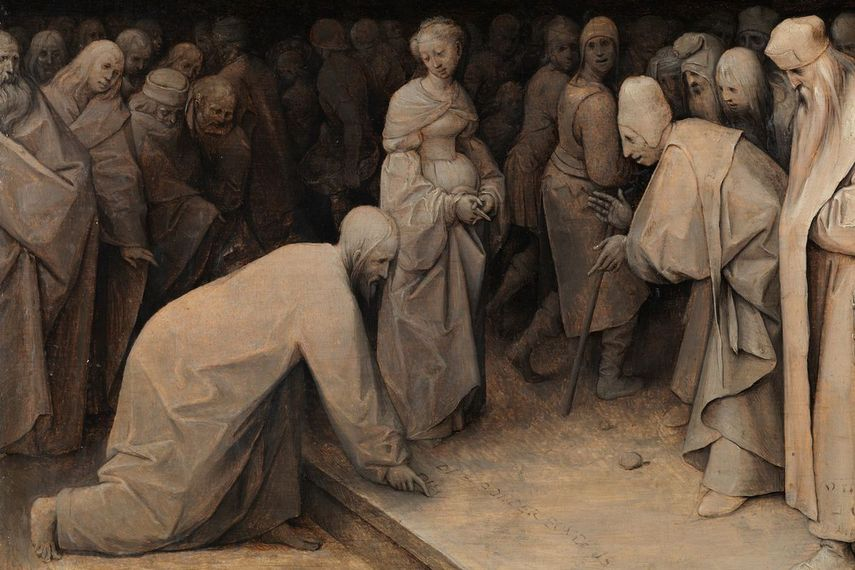





















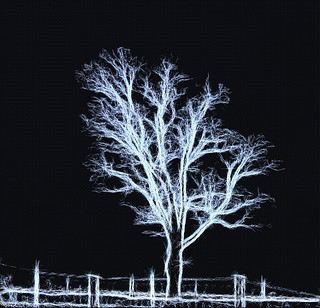


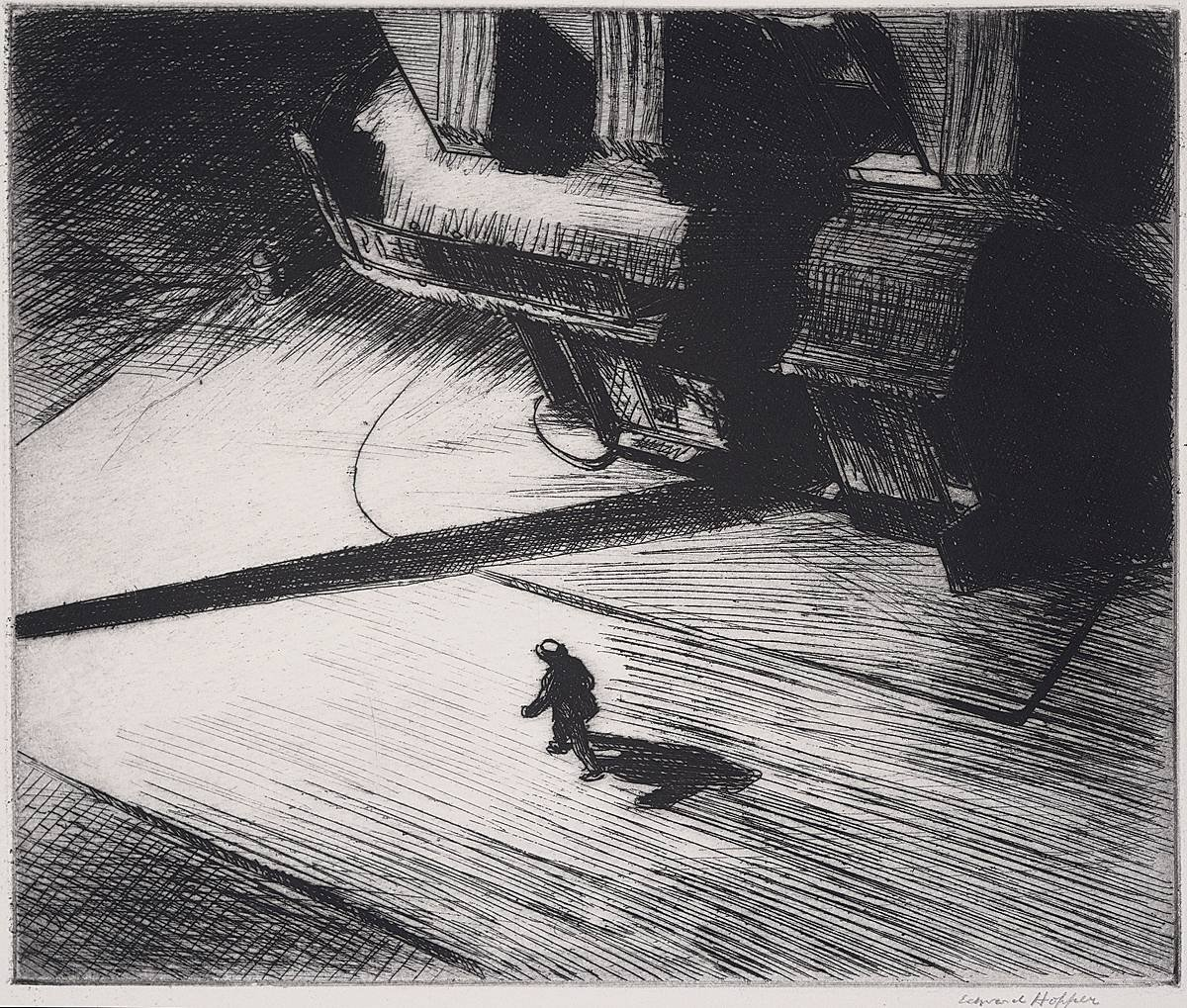
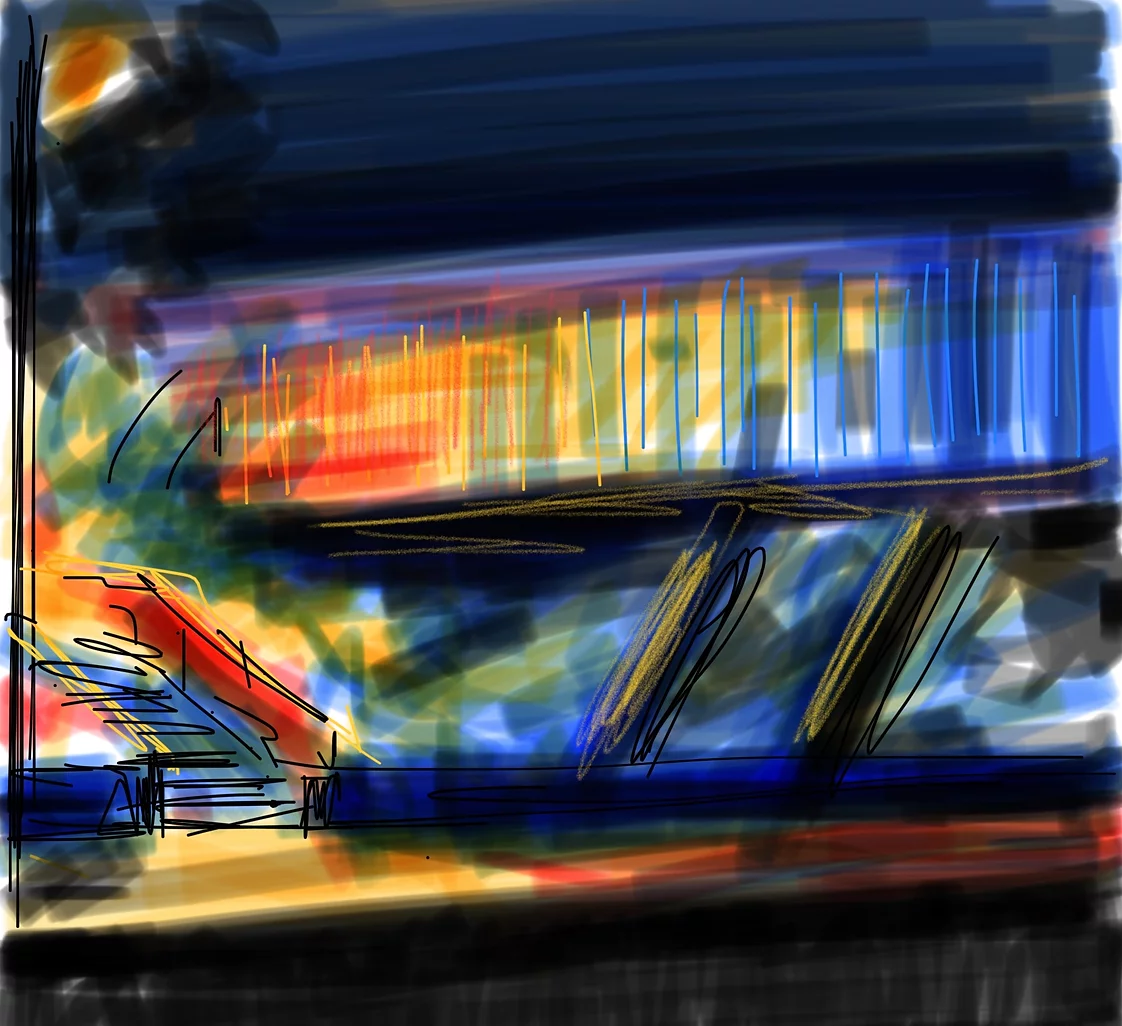
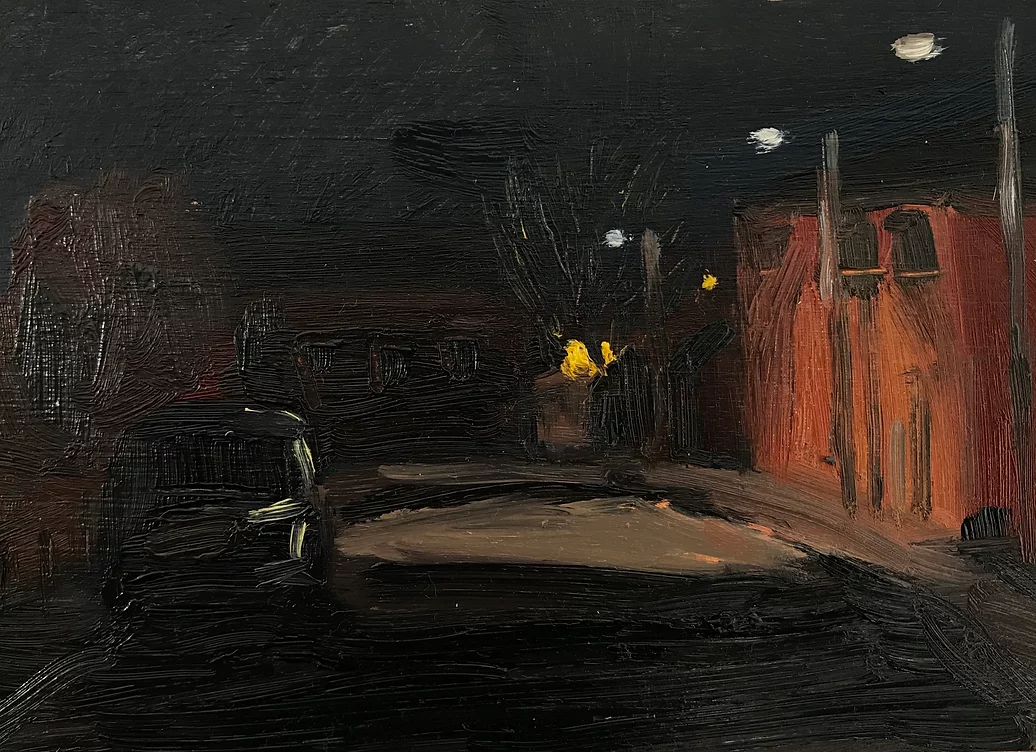
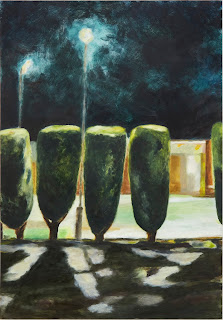


No comments:
Post a Comment